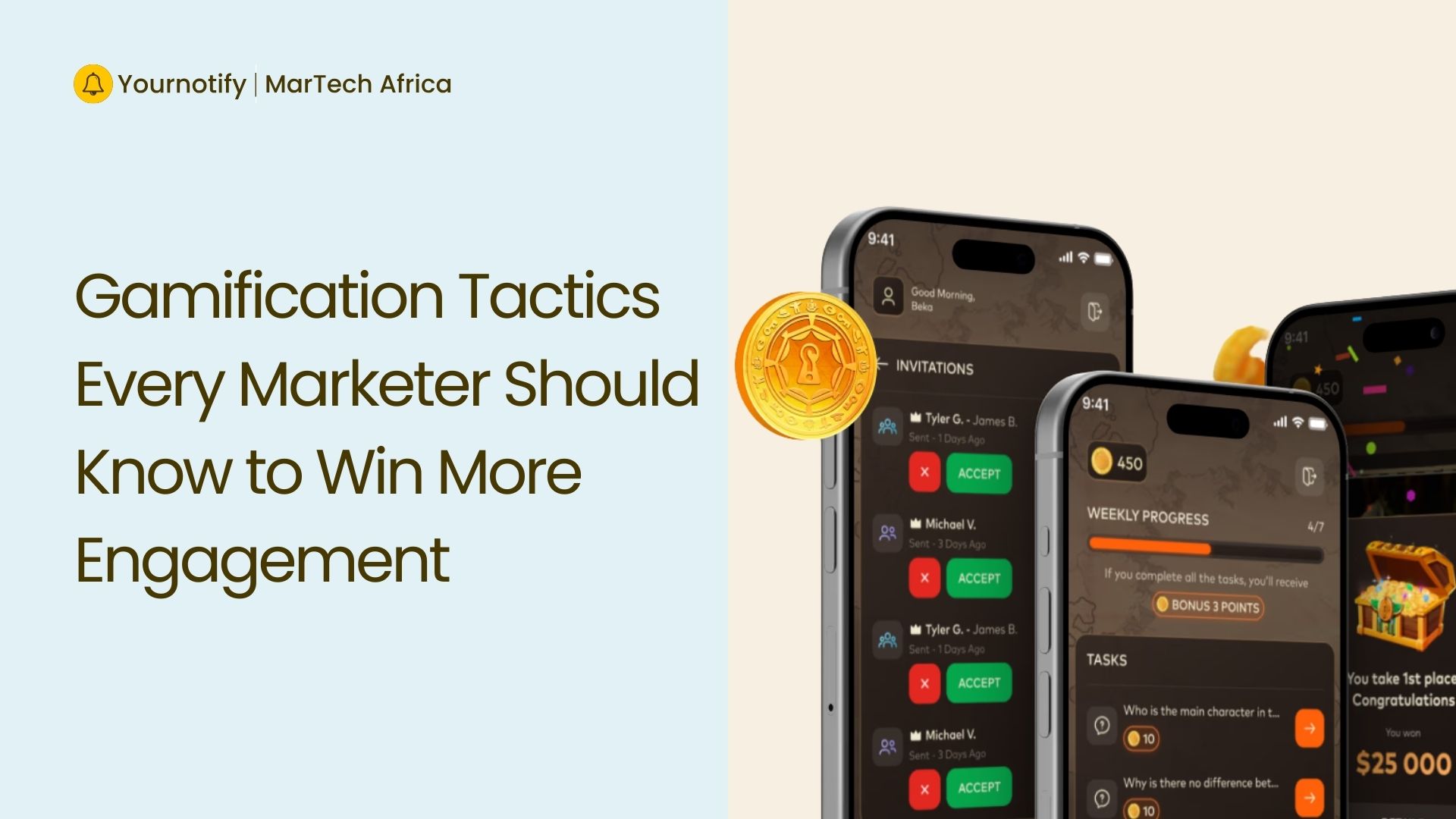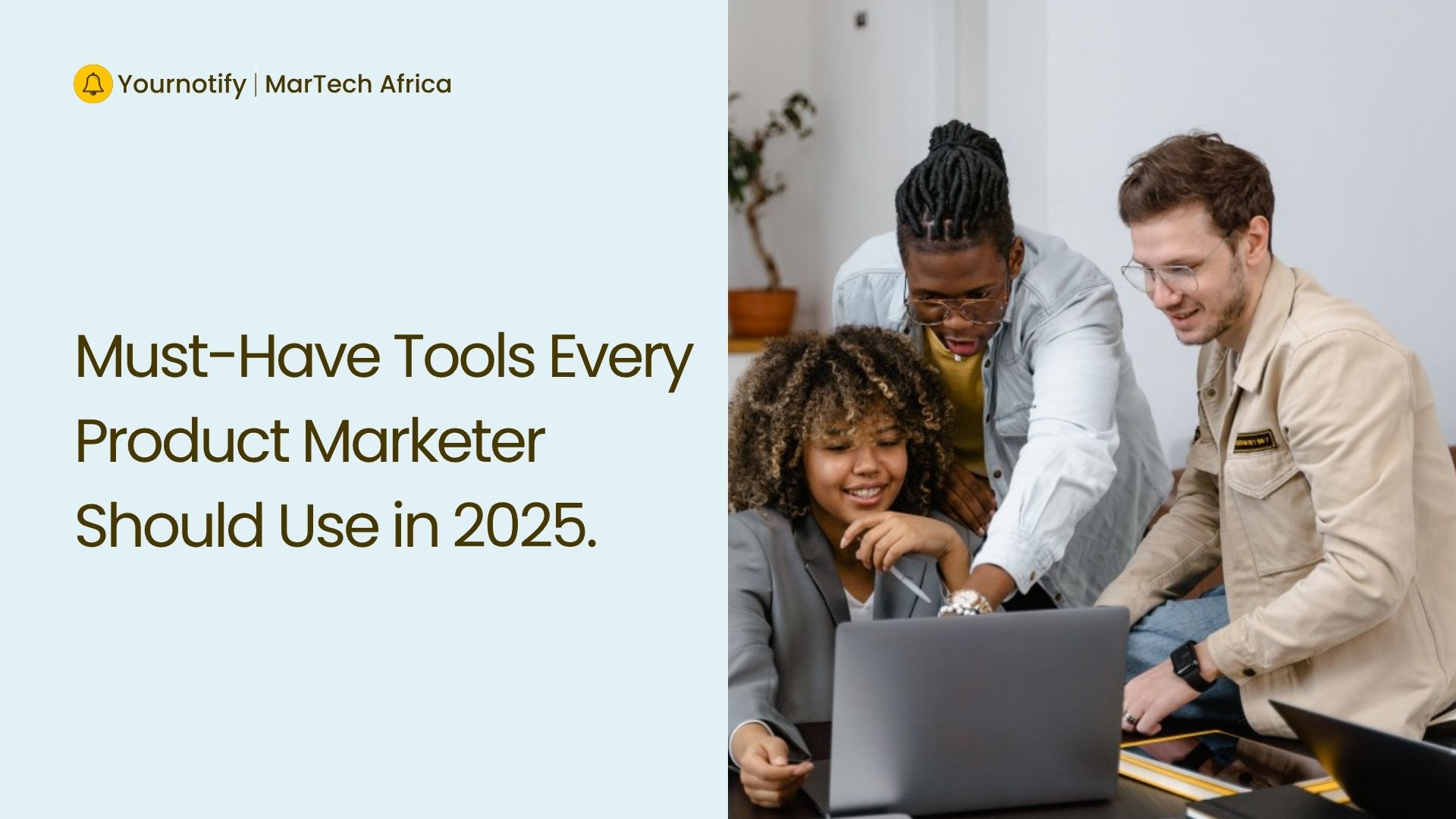If you’re building or marketing a brand in Africa today, social media has become the…

Gamification Tactics Every Marketer Should Know to Win More Engagement
In today’s cluttered digital environment, consumer attention has become a scarce commodity and brand loyalty is more fragile than ever. Research suggests that the typical person is exposed to 4,000 to 10,000 brand messages per day, depending on how you define “message” (ads, promotions, social content etc.). Microsoft has also claimed that the “average human attention span” has dropped to around 8 seconds, which makes capturing interest almost instantaneously critical.
Loyalty, too, has lost much of its permanence. In the consumer goods industry, 74% of customers say they’d switch to a competitor after just one poor online experience. Also, 62% of consumers would stop buying from a brand after a data breach or privacy violation. These figures show that consumers both expect more and are quicker to pull away when expectations aren’t met.
With this constant change in the digital environment, brands are turning to gamification, weaving game-like mechanics into everyday marketing to make experiences more engaging, interactive, and emotionally resonant.
Why Gamification Works
Gamification takes basic human drives like the need to achieve, collect, compete, and be recognized and infuse it into marketing. When a brand frames an action as progress, earning points, unlocking a level, topping a leaderboard, users stay motivated.
Research shows gamification can meaningfully lift results. Gartner has noted that well-designed programs improve engagement and loyalty across industries. It isn’t about turning everything into a video game; it’s about turning routine actions into rewarding milestones.
Seven Practical Gamification Tactics
Points, Badges and Leaderboards
The PBL model, points for activity, badges for milestones, leaderboards for ranking remains the most common entry point. Coffee shops, airlines, and learning platforms have used it for years because progress tracking is addictive.
Branded Challenges & Competitions
Challenges turn customers into participants. A skincare brand could launch a 7-Day Glow Challenge encouraging daily posts, with digital stickers and shout-outs for completers. The campaign drives user-generated content and keeps the brand present on feeds for a week straight.
Interactive Quizzes & Treasure Hunts
Quizzes satisfy curiosity while guiding purchase decisions. A fashion retailer can create a “Find Your Style” quiz, ending with personalised recommendations and a small coupon.
Treasure hunts or hidden vouchers encourage deeper browsing. Jumia Black Friday campaigns have used online hunts to push shoppers across dozens of product pages, boosting both engagement and conversions.
Spin-to-Win Wheels & Instant Rewards
Randomized prizes generate urgency. A spin wheel on a website promises discounts, free shipping, or samples in exchange for an email sign-up. The unpredictability keeps people trying, while you gain permission to remarket. Tools like Woorise or Privy make the mechanic easy to deploy.
Progress Bars, Streaks & Habit Loops
Habit-forming design can be subtle yet powerful. Seeing “Day 5 of your saving streak” or “You’re 80% to Gold Level” motivates people to complete the journey. Language app Duolingo thrives on streaks, gems, and levels, making daily study feel like a personal win.
Financial apps increasingly use the same logic progress indicators for budgeting, badges for consistent deposits, and gentle nudges when a streak is about to break.
Augmented Reality & Real-World Play
AR turns passive viewing into participation. Pepsi Max famously placed AR tigers, UFOs, and robots at London bus stops, sparking viral reactions and free media
Loyalty Quests & Tiered Rewards
Tiered loyalty schemes motivate continuous engagement by framing rewards as an ongoing journey. Even modest businesses can mimic this by introducing “Bronze, Silver, Gold” milestones with perks like free delivery or priority access.
Tips for Rolling Out Gamification Tactics
1. Define the Business Goal First
Before introducing gamification, be clear about what you want to achieve. The tactics that work for boosting email sign-ups may not be the same as those for driving repeat purchases or referrals. For example:
- If the goal is sign-ups, use simple entry challenges like spin-the-wheel or scratch cards.
- For repeat purchases, loyalty points and tiered rewards work best.
- To boost referrals, think leaderboard challenges or rewards for inviting friends.
- For brand awareness, quizzes, polls, and shareable challenges make users spread the word.
2. Align Fun with Brand Identity
Gamification should feel natural to your brand voice and industry. If you’re a bank or fintech, customers expect trust, stability, and professionalism so avoid overly slapstick or trivial games that may cheapen credibility. Instead, use goal trackers, achievement milestones, or savings challenges.
On the other hand, a lifestyle, fashion, or entertainment brand can lean into humour, creativity, and playful mechanics like AR filters, trivia, or meme-based challenges. The key is to make sure the game reinforces your brand story rather than distracts from it.
3. Keep Rewards Meaningful
Badges and points can spark initial interest, but people need rewards that carry real value to stay engaged. These rewards don’t have to be expensive; what matters is that they feel worthwhile. A discount or voucher, for example, can directly motivate a purchase, while early access to new collections or limited products appeals to customers’ desire for exclusivity.
Recognition within a community such as featuring top players on social media or giving them a special title can create a sense of pride and belonging.
Even something as simple as personalizing a reward based on past purchases shows customers that their engagement is noticed and valued. When rewards are meaningful, they spark anticipation, encourage repeat interaction, and build lasting loyalty.
4. Optimize for Mobile
Over 70% of online interactions now happen on mobile devices. If your gamified experience loads slowly, has tiny buttons, or requires too many steps, users will abandon it.
Some of the best practices:
- Keep interactions short and snackable (think quizzes or spins).
- Ensure visuals are responsive and touch-friendly.
- Avoid heavy graphics that slow down the experience.
- Use push notifications or in-app reminders to keep users coming back.
A smooth, mobile-first design ensures higher participation rates and better conversion.
5. Measure, Refine, Repeat
Gamification is not “set and forget.” You need to track what’s working and optimize regularly. Key metrics include:
- Participation rates – How many people are engaging?
- Time spent – Are users actually enjoying the experience?
- Conversion metrics – Are game players moving closer to your business goals (sign-ups, sales, referrals)?
- Retention/return visits – Are they coming back for more?
By analyzing this data, you can tweak mechanics, introduce fresh challenges, or retire features that don’t deliver ROI.
Gamification is about tapping into human motivation and turning routine interactions into rewarding experiences. When done right, it transforms passive audiences into active participants who feel invested in the journey. Gamification creates a sense of achievement that keeps people coming back. In an era where attention is scarce, the brands that master this approach won’t just capture clicks, they’ll earn trust, loyalty, and long-term engagement.
Related Content
Customer Retention Strategies That Work in African Markets (2025 Guide)


